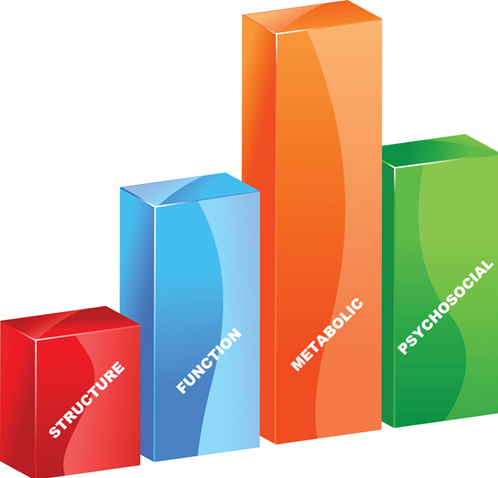
The Four Pillars of Chronic Pain
Dr. Christopher Aysom, Principal Clinician
BChiroSc, MChiro (Chiropractor)
If you’ve been in pain for several weeks or months without lasting relief, then your pain is classified as chronic. In these situations, rarely can the problem be fully explained in simplistic terms, otherwise the most common first-line treatments, such an adjustment, stretching and accupuncture or massage, may have yielded better outcomes.
To understand what is causing a patient’s chronic pain and why it’s not getting better, we have to be detail-oriented and closely examine four important categories. This way, we can paint a full picture of the contributing factors that cause a patient’s unresolved pain.
In our office, the intake process is detailed and we ask a lot of questions. This is by design and by no means is it to pry into personal habits or pass any form of judgement. To be able to help you effectively, we need to know why you have pain; what’s causing it and why it’s not getting better.
Chronic pain is multi-factorial and we need to address the following four core pillars to provide you with an effective solution.
1. STRUCTURE
The structural category represents the physical components of the musculoskeletal system. Discs, cartilage, ligaments, nerves, tendons, muscles, etc. These are the things that show up on the X-ray, CT or MRI image and are subject to varying levels of degeneration in different people. The health of a physical anatomical structure can have a direct relationship to pain, but it’s important to recognise that it is not the only factor. Some of the important questions that we consider are:
- How old is the patient?
- Has there been an accident or physical trauma?
- Does the pain respond to movement, or does it hurt constantly without relief?
- Is there any previous diagnostic imaging?
2. FUNCTION
When we consider function, we are essentially asking the question; “can the structural components do what they’re meant to do?”.
That is, can you move properly? Can you use your physical anatomy to it’s potential, or if not, why not?
The biggest predictor of injury in the musculoskeletal system is range of motion. When you have good range of motion, you have less chance of injury. When you have poor range of motion, you have a higher chance of injury.
We assess your function by measuring your range of motion and collecting the data.
- Is the range of motion full, or is it limited?
- What are the symptoms you feel?
- If it’s limited, is this likely to be caused by degeneration, or is it something else (i.e. adhesion / fibrosis)
3. METABOLIC
While it’s beyond the clinical scope of a Chiropractor to diagnose outside of the musculoskeletal system, it is especially important to have awareness for any metabolic contributions to your chronic pain. That is, are there any other physical health factors that could be contributing to the current pain, or preventing healing?
Sometimes pain can be triggered or exacerbated by certain foods or environmental exposures. Sometimes there are other symptoms in the body that may seem totally unrelated, but will provide important clues about the underlying cause.
Some patients live with other chronic conditions which not only affect the intensity of symptoms, but will also impact on the ability for the body to heal through manual treatment (diabetes, celiac disease, auto-immune conditions).
Sleep is also a key component of chronic pain, because sleep is that special time where the body gets to physically heal. If you only get sleep 3 hours per night, we need to know!
4. PSYCHOSOCIAL
If the first three pillars are the physical categories, then psychosocial is the non-physical. It is the contribution of social and mental wellness to a person’s chronic pain.
One of the key questions here is about STRESS.
Stress impacts on a lot, but in the context of chronic pain we mostly consider whether it has any direct relationship to onset of symptoms and how it might impact on the ability to physically heal. Very few patients report zero stress in their lives. For most, it’s just a question of how much and how intense it is from day to day.
The psychosocial components of chronic pain are vast and complex, therefore we don’t gloss over these. It’s important to understand the non-physical aspects of your condition and what impact the current pain has had on your life. One question that can be very insightful is, “What has your pain taken away?”.
Final Thoughts
Chronic pain is complex and multi-faceted, but we can be guided through this complexity to better understand a patient’s pain by utilising a framework based on four pillars; Structure, Function, Metabolic and Psychosocial.
Our clinical experience has shown that by placing a high emphasis on information gathering and diagnosis, we can provide more effective treatments and better outcomes for our patients.
If you, or anyone that you know is suffering with chronic pain that won’t go away despite everything you’ve tried so far, please consider scheduling an Initial Consultation (link below on this page).
Dr. Christopher Aysom, Principal Clinician
BChiroSc, MChiro (Chiropractor)
Apex Soft Tissue & Spine
Pymble, NSW, Australia
https://apexsofttissue.com.au




